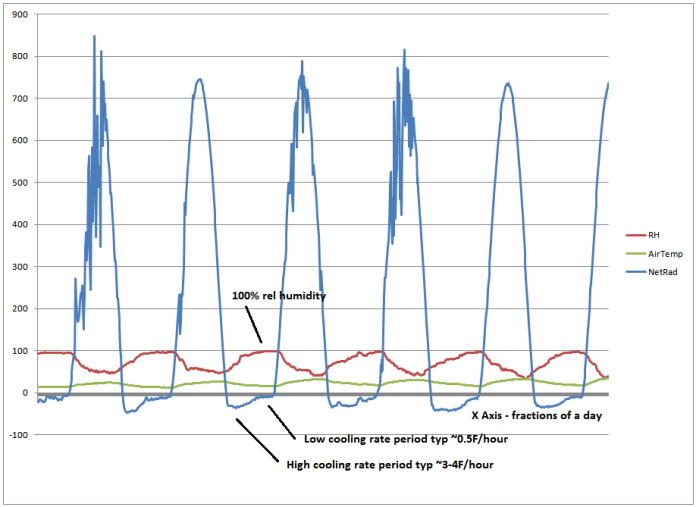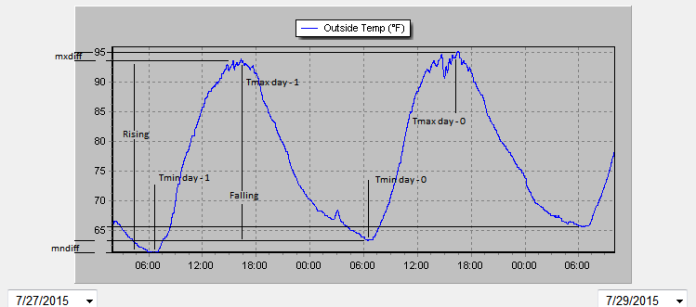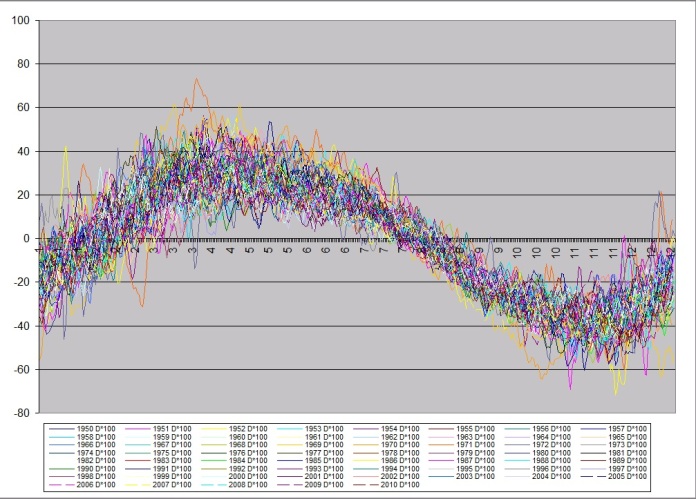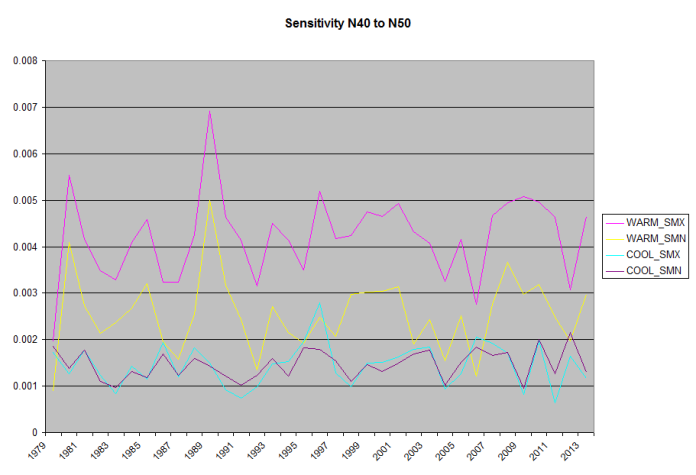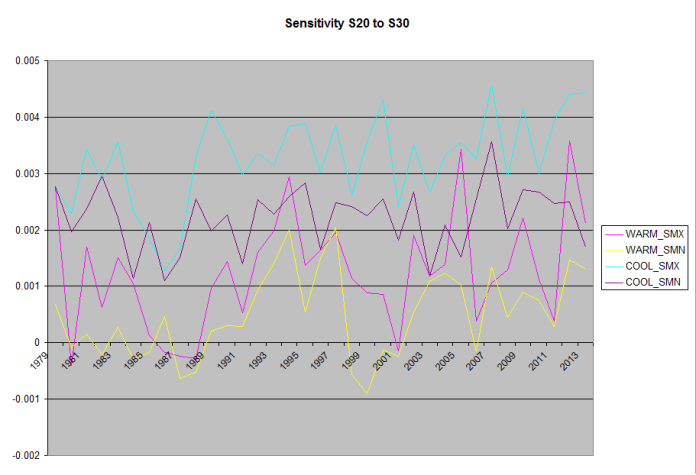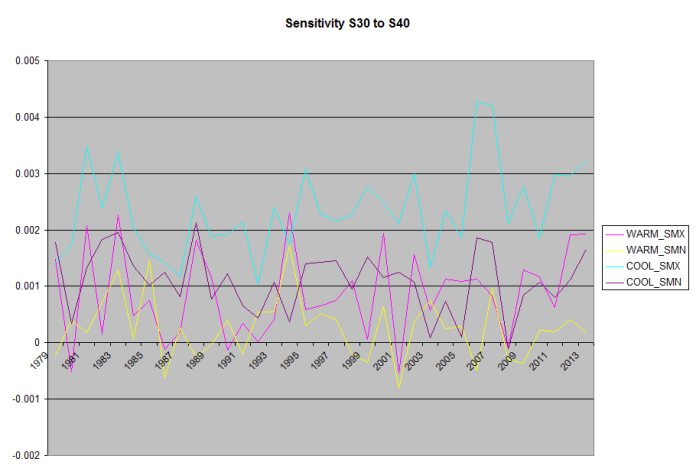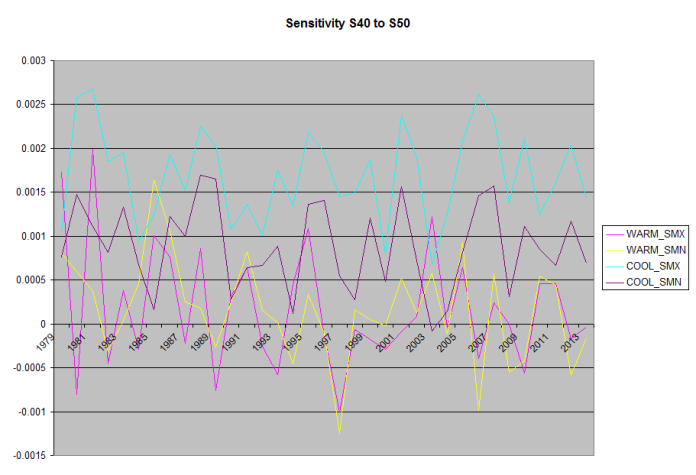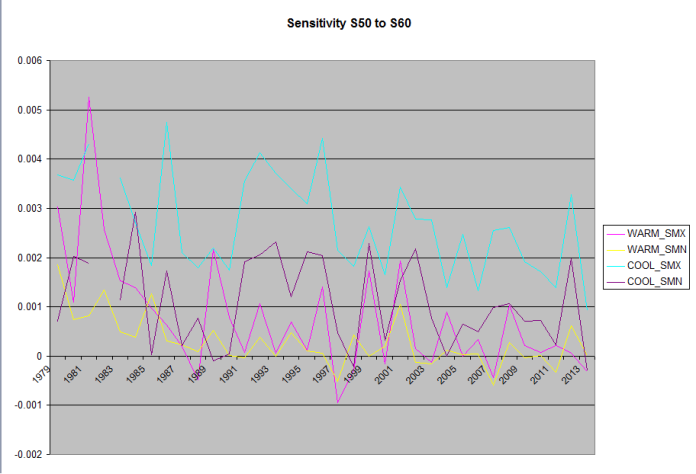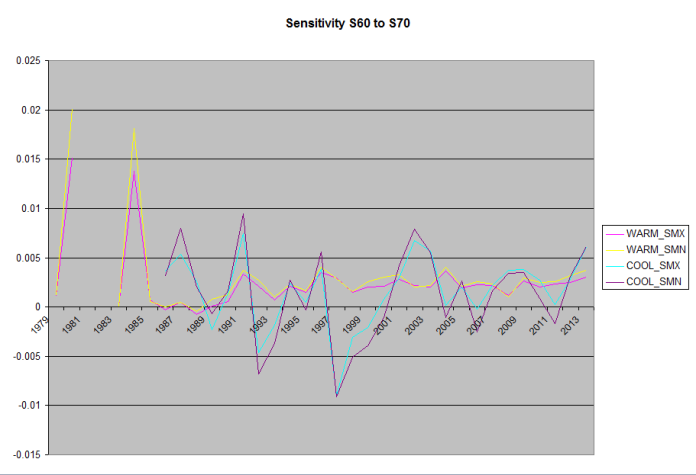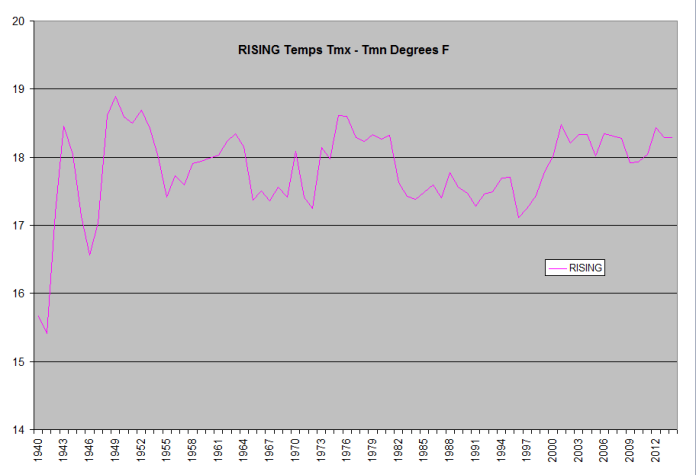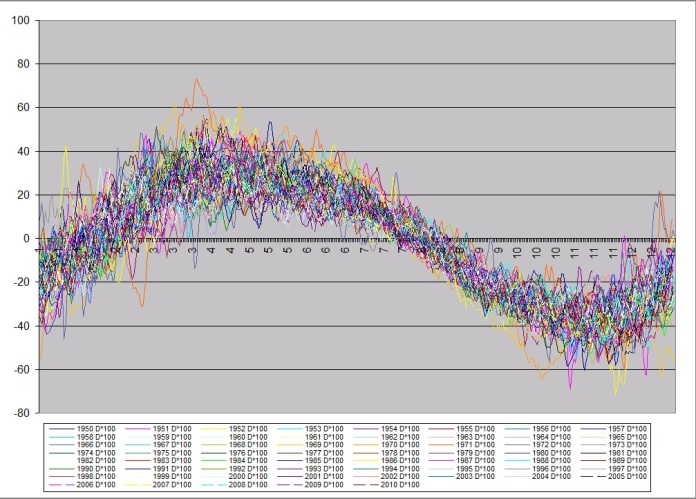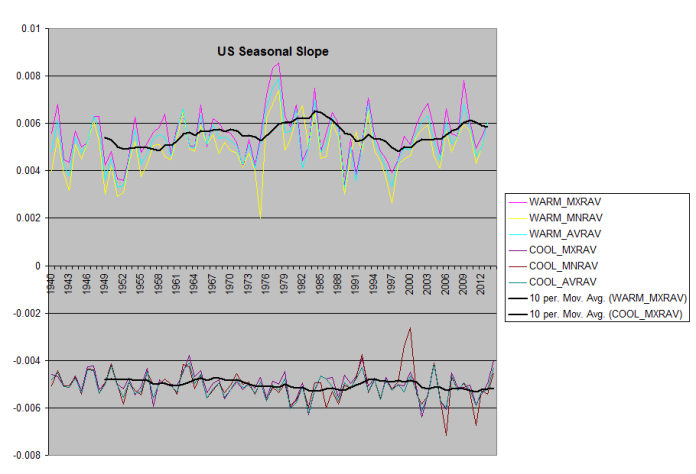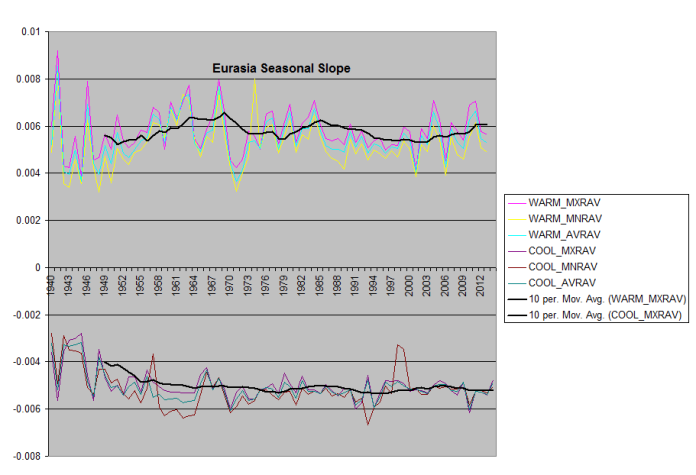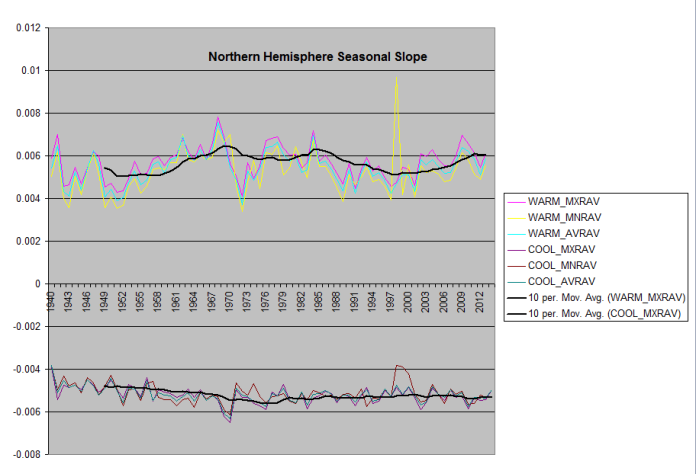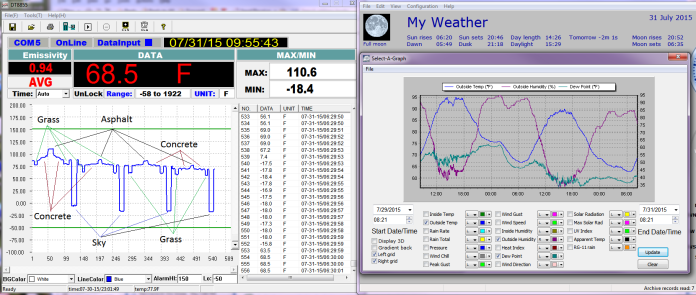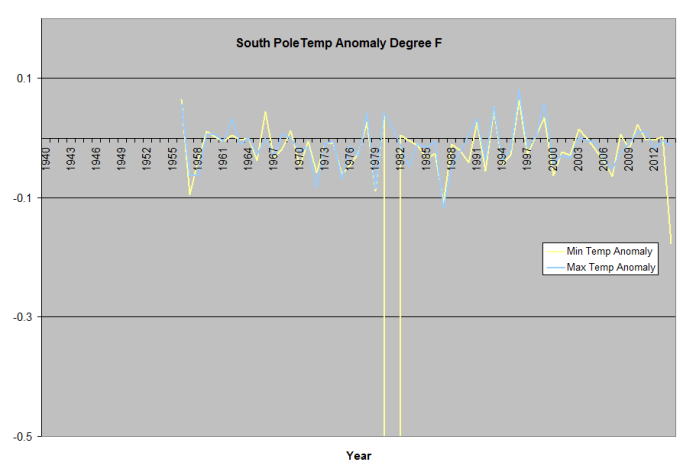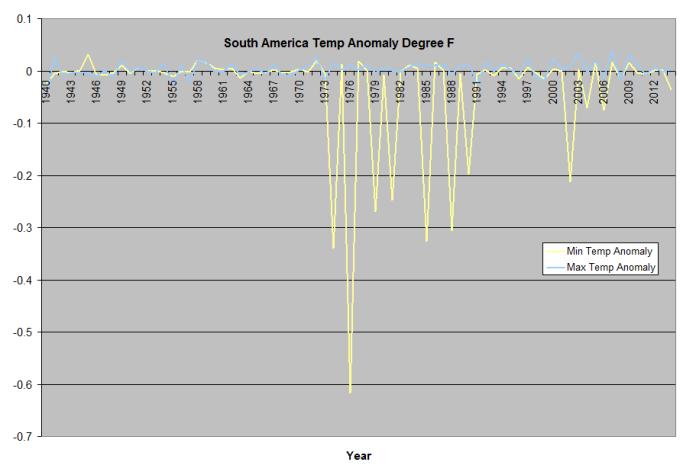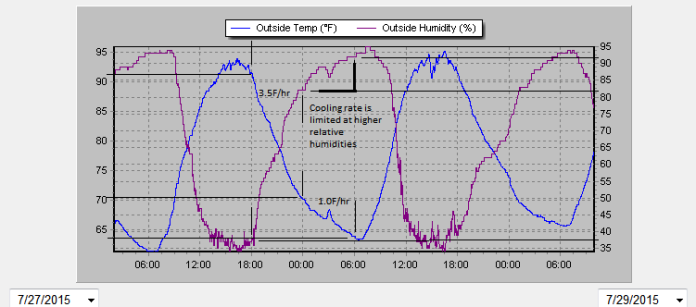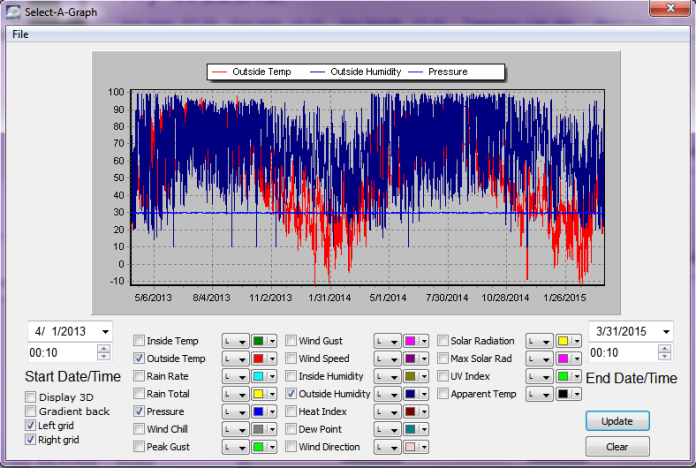An analysis of nightly cooling has identified non-linearity in cooling rates under clear sky no wind conditions that is not due to equilibrium with the with the radiative temperature of the sky. This non-linearity regulates surface temperature cooling at night, and is temperature and dew point dependent, not co2, and in fact any additional warming from Co2 has to be lost to space, before the change to the slower cooling rate.
Nightly data with min temps following dew point temp.
Just under 60 million surface station measurements from around the world showing min temp following dew point.
Night time cooling is nonlinear, at sunset the cooling rate is very high, this is the regime controlled by co2, but later in the night, as air Temps near dew point, cooling greatly slows, this is the regime controlled by water vapor. The thing is, even if there is a slight warming from co2, that heat is lost to space prior to the switch to the low cooling rate water vapor controlled regime(because the switch is temp controlled). Water vapor controls cooling, not co2. Consider deserts and tropics as the 2 extreme examples, deserts, mostly co2 limited cooling drop on average of 35F in a night, there tropics controlled by water drop on average 15F at night. Lastly the only way co2 can affect Temps is to reduce night time cooling, it doesn’t.
I finally found another Scientist looking at cooling, and they found that cooling was exponential. After exchanging messages, he send me the link to the data they collected, and in it had weather and solar, I looked at a few sample clusters of days, and found what I was looking for.
This is part of 6 days. But the key data is the NetRad, note how during the night at the same time rel humidity nears 100%, net radiation drops by 2/3rds. This data covers at least 2 clear days, and the other days are mostly clear. There are many examples of this.
This is the evidence that supports my theory that water vapor regulated nightly cooling, and co2 doesn’t do anything.
Increasing relative humidity is the temperature regulation of nightly cooling, not co2.
Here is the same date, just a closer view.
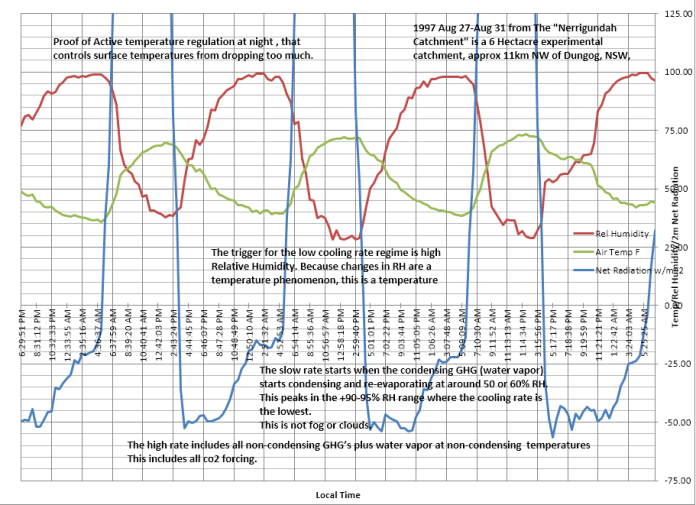
The effects of a 2 state cooling rate(4F/hour, 1F/hour), both starting at 75/77F One with a 60F dew point, the other a 50F dew point.
Both examples converge to the same final temp.
If we could see this invisible process I think we’d see something like this
2. Variations of Radiation is only a part of the Climate Change PhysicsInternal mechanisms of the global energy budget such as evaporation-condensation and deep global ocean current variations also play an independent role from radiation as a major climate change mechanism (Figure 3). The whole AGW theory and dialog over the years has been based on radiation changes. This is far too narrow and naïve.
ftp://ftp.ncdc.noaa.gov/pub/data/gsod/
Code and reports (chart source data):
http://sourceforge.net/projects/gsod-rpts/


